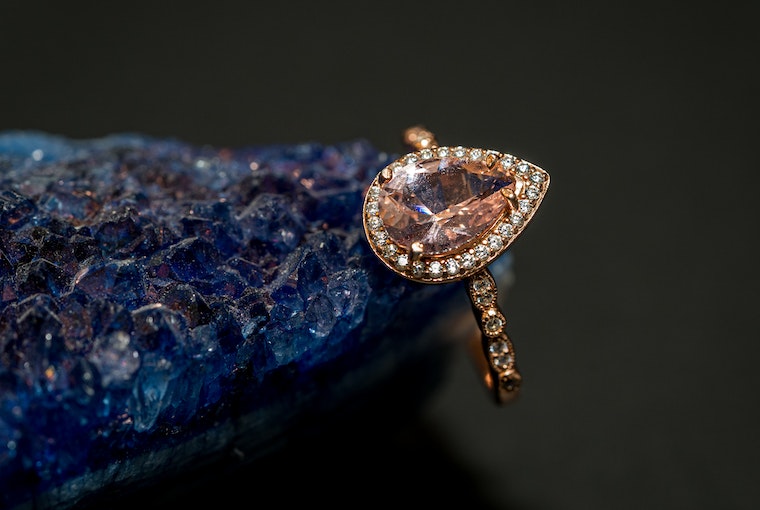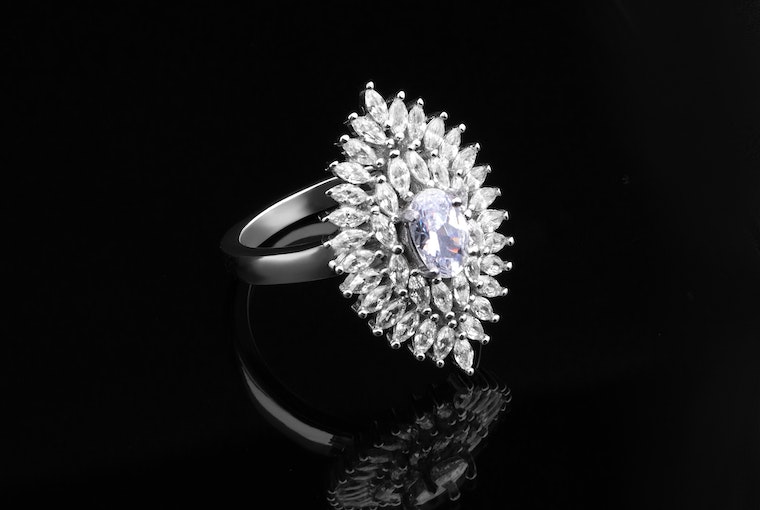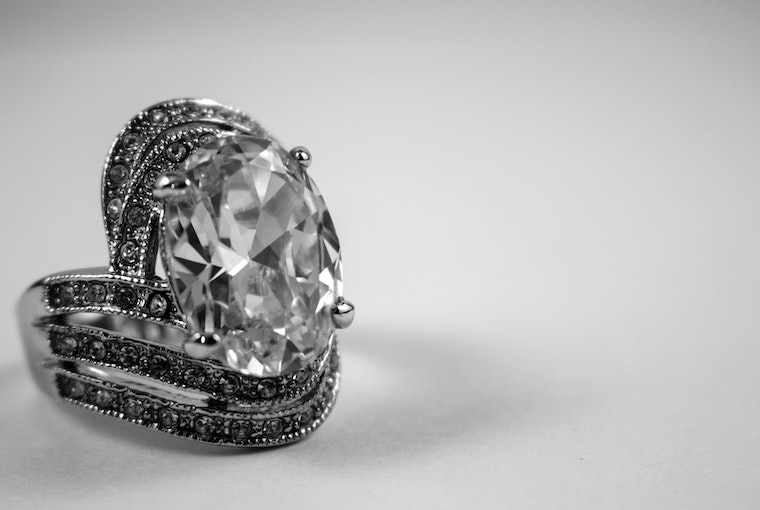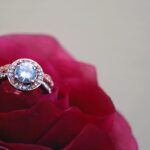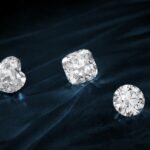Silver
Ways To Tell If A Diamond Is Real Or Fake
Diamonds are rare and precious. For most people, buying one can be an expensive purchase. You won’t want this investment to go wrong.
You should therefore know how to determine if a mounted diamond really is real before you pick out that perfect stone for someone special. Many gems look very similar to diamonds. White sapphire, white topaz, white zircon are just a few.
You need to be able to distinguish a genuine Diamond from one made to look like it. A professional jeweler is recommended if you have a diamond-ring and are unsure about its authenticity. If you don’t wish to go to a professional jeweler, you can run a few tests at home to verify the authenticity of your stone.
Table of Contents
Here are some ways to tell if a diamond is real
How do you know if a diamond really is genuine? To determine the quality of your diamond, you can run it through one or more of these tests.
1. Try Scratching
This test takes into account the fact that Diamonds, one of the strongest substances on Earth, can cut through glass. This is called the scratch test. It will prove whether your glass is real or fake. You will need a plate of glass, and your diamond.
Place the glass on a platform and scratch its surface with your diamond. You can tell if your diamond is genuine if you scratch it. If it doesn’t, it is fake.
This could cause glass to crack. This is not the best way to test your stone’s quality, as many other gems can replicate it.
2. Test By Fogging
Fogging your diamond with your breath is a quick and easy way to tell the difference between a genuine diamond and a fake. Your diamond should be clear within a few seconds. It should clear up after three to four seconds.
Diamonds instantly disperse heat and make it impossible to stay fogged. But, not all diamonds have the same effect.
This test requires that your diamond be free from oil stains or coverings. You can perform this test on both the real and suspect stones.
You will be amazed at how clear the real diamond is, and how fake one fogs up as you inhale it. The fake stone builds condensation and fogs up, while the real diamond is clear and clean.
3. Water/Float Test
This test is a great choice, even though it’s not conclusive. This is due to the high density of diamonds. You will need water and a diamond to perform the test.
Drop your diamond into the glass of water. It will sink to its bottom if it is genuine. It will sink to the bottom if it is real.
Remember that fake diamonds do not always float in water. To determine if the fake diamond is real, you might need to do further tests.
4. Try Heating
Due to their extremely strong material construction, diamonds are resistant to heat. This is also called the heat test. To perform the heat test, you will need to have a glass full of cold water, some fireproof gloves or players, and a lighter.
The stone should be heated for approximately 40 seconds before being dropped into the cold water. If the stone cracks, it is a sign that the Diamond has been faked. Real diamonds would not react to this. This shows the quality and strength of this stone .
Due to the constant quick expansion and contraction of heat, weaker materials and gems like zirconium can crack. For example, Pyrex dishes can be used to cook. The dish could shatter if you wash it right away after it has been removed from the hot oven.
Because diamonds are one of the strongest metals on Earth, they can withstand extreme heats. They are capable of dispersing heat quickly so temperature changes do not affect them.
5. Transparency Test
To make this test work, you will need a newspaper. Your diamond must also be clean. In a section of the newspaper, place your diamond face-down, with the pavilion facing upwards.
Your diamond may be fake if you are able to read the letter through it. If the letters appear blurry, it is likely that your diamond is real.
6. The Dot Test
This alternative to the Transparency Test can be used with regular white paper. Use a pen or a pencil to make a small mark on your piece of paper. Next, lay the diamond flat side down onto the dot.
The pointed end of the diamond is reflected onto the paper. It is fake if you can see the reflection of the circular inside the stone. You have a genuine diamond if you can’t see the reflection inside the stone.
Diamond is known for its excellent refractive properties. It bounces light in different directions than if it were a straight line. You cannot read letters through a real, natural diamond.
7. Try The Sparkles
Your smartphone and your diamond may be all that you have at the moment. You’re good if your phone has a torch. With a flashlight, you can check if the ring is genuine.
This is a quick and simple test that only requires your eyes. A diamond’s brilliant reflection is what gives off powerful sparkles. Simply hold your diamond in front of a regular lamp to see the sparkling and brilliant colors.
Diamonds also make stunning displays due to their beautiful reflections of fire and color. You’ll be able to see the large difference in their reflection and colored light, which is unlike other stones like Cubic Zirconia. Cubic Zirconia emits a notable rainbow-colored light.
You may need to test other methods because this is not a 100%-proof procedure.
8. Inspection under Ultraviolet (UV-) Light
Blue fluorescence is a characteristic of most diamonds, but not all. It can be seen when they are exposed to ultraviolet light or black lights. This diamond lighter test proves your diamond is real.
It might not show the exact same blue light. Some diamonds are not fluorescent under ultraviolet light. Moisanite may be identified by a slight fluorescence in green, gray, and yellow light. The UV test can only narrow down the possibilities.
This test is not the final determinant. Fake diamonds could be mistaken for real ones. Doping is the process of removing fake diamonds from your body.
When diamonds glow under UV light, it is treated to make them shine. You can observe the reaction of a diamond under UV light.
9. The Magnifying Glass Test
Some imperfections are common in real diamonds, also known as inclusions. Take a magnifying lens and hold it up to your diamond. These imperfections can be found by looking closely.
If none is found, your diamond may be fake. There are some diamonds that are flawless, but these are usually lab-created or too costly.
10. You Can Check the Diamond With A Loupe
A Loupe could be described as a magnifying glass for jewelers and a stethoscope to doctors. Loupes can be used to examine precious stones’ fine details like a magnifying lens. Loupes and magnifying glasses differ by the absence of handles and conical lens frames.
Loupes are used by most jewelers to examine diamonds for clarity and quality. Amazon has a wide selection of Loupes at a very reasonable price. Once you have one, you can start your stone inspection.
Tiny imperfections are the first thing you should look for in mined diamonds. Second, look out for small color variations or flecks. You most likely have a genuine diamond if there are any.
Remember that Perfect Diamonds are those without flaws. It doesn’t mean that you have a fake diamond if there are no flaws. This could indicate that you have a rare, perfect diamond. Your stone may be worth more.
While imperfections are common in real diamonds, I wouldn’t recommend using them as the sole way to determine their quality. For example, lab-created diamonds. Because they are created in a controlled environment, it is much easier to spot flaws.
It may be difficult to spot flaws. It might be difficult to spot inclusions if you don’t have experience with diamonds.
11. Use a diamond tester
Most gemologists have a thermal conductivity probe, or meter, in addition to a Loupe. This tool can be used to determine the thermal conductivity for a gemstone. Because of their heat conductivity, the diamond should quickly disperse heat once it has warmed up. disperse
The way synthetic moissanite stones disperse heat is similar to real diamonds. This test does not prove moissanite.
There are many real-diamond testers available on the market. Feel free to choose your favorite. On the right, you can see an Amazon example.
12. Scale Your Stone
It is important to know that the tools required for scaling a diamond don’t come in every household. It is best to bring it to your local diamond jeweler so that they can weigh it for you.
If the stone weighs more than a real diamond of the same shape and size, you will know it is fake. Zirconia is a synthetic material that weighs approximately 55% more than real diamonds.
You can match the weight of a certified diamond to that which has a grading certificate. Two stones of the same size and shape are required to perform this test correctly.
Conclusion
With all this information, you can be sure that your diamond is genuine. You now know how to determine if a set of diamond earrings or necklace is genuine.
You can choose how you want it to be done, from simple home tests to more advanced full-proofing methods. If you are doing this on your own, I recommend you choose three tests. Or take your diamond to certified jewelry. Get up and give your diamond a test!

